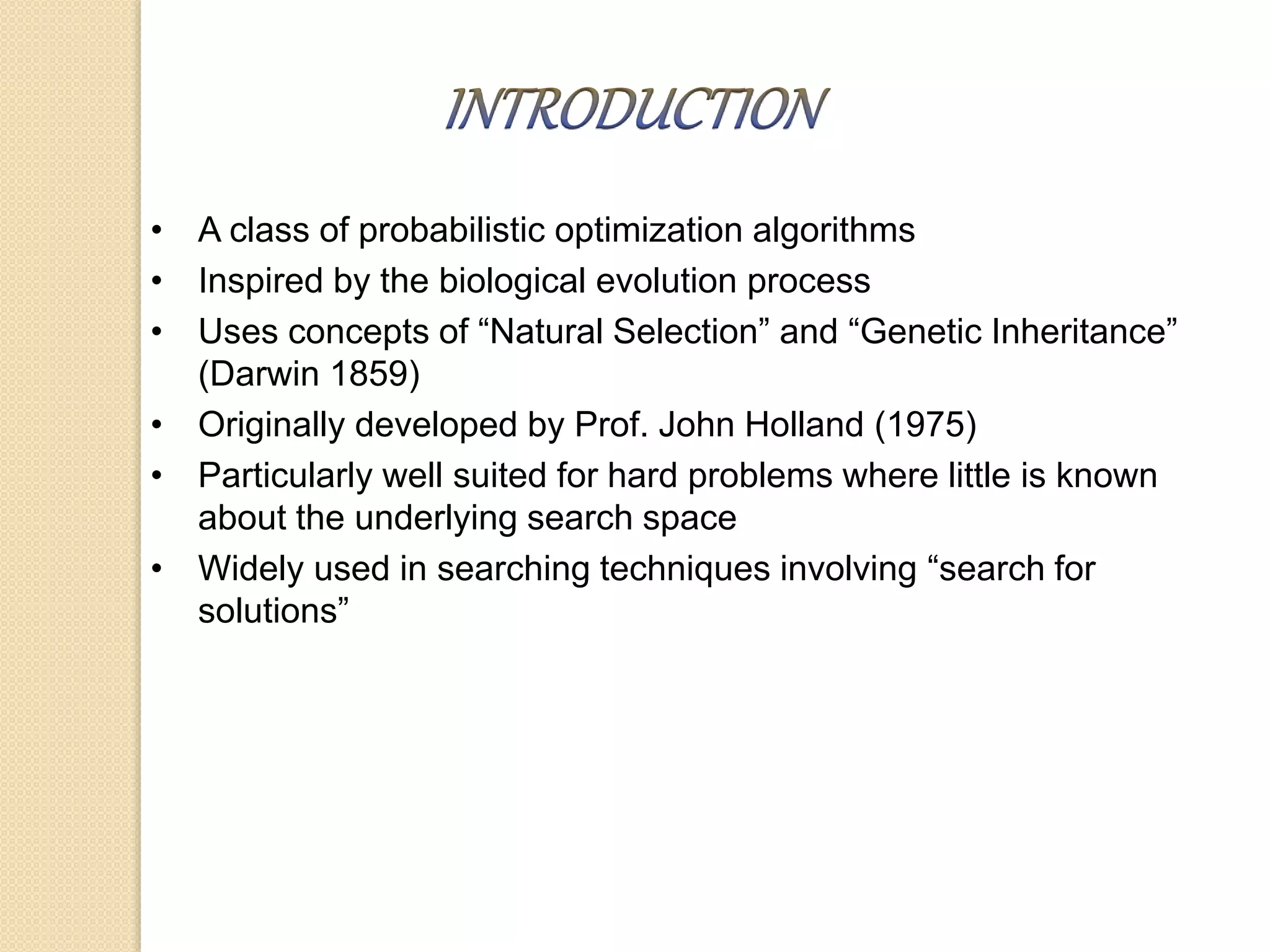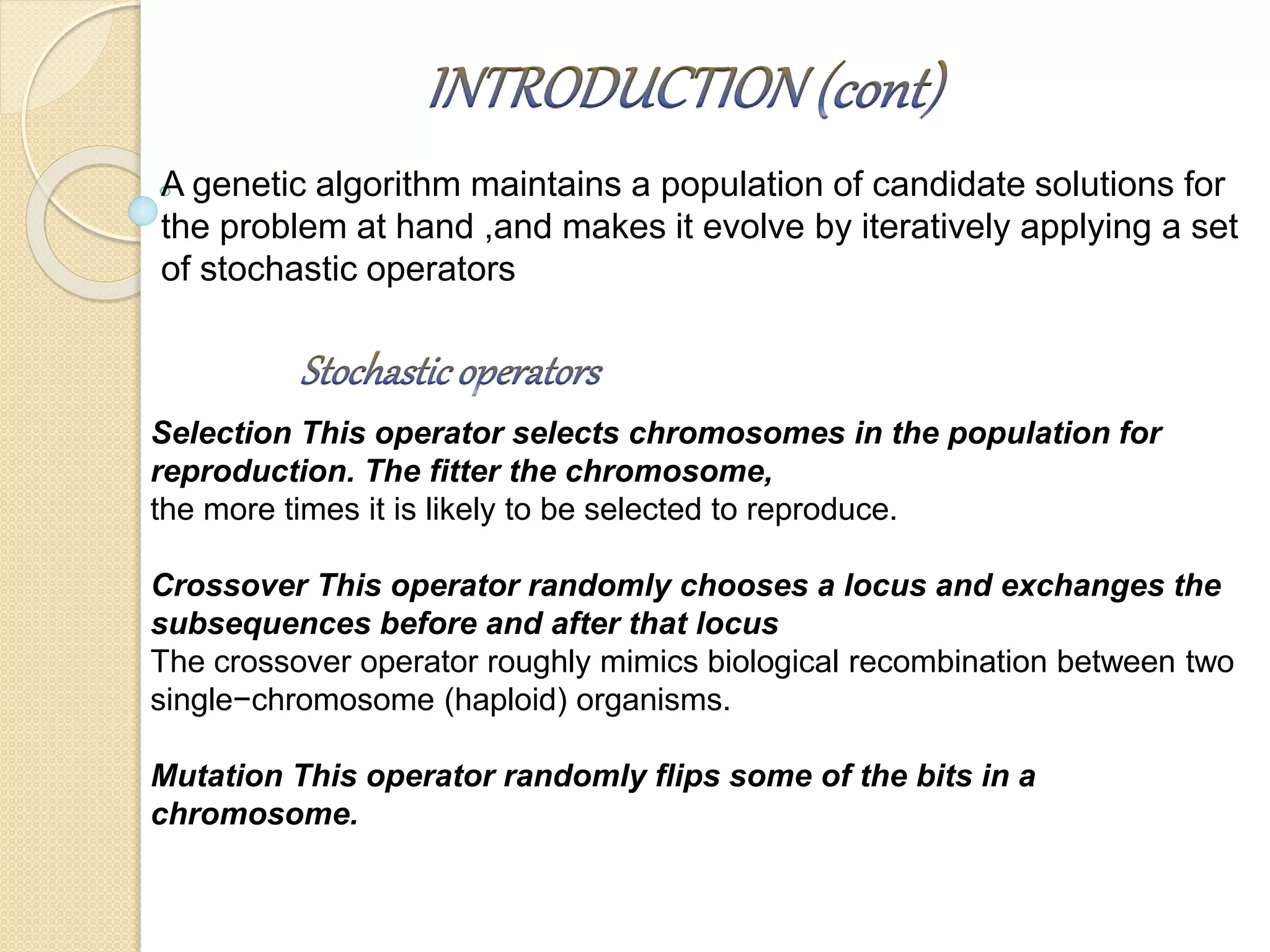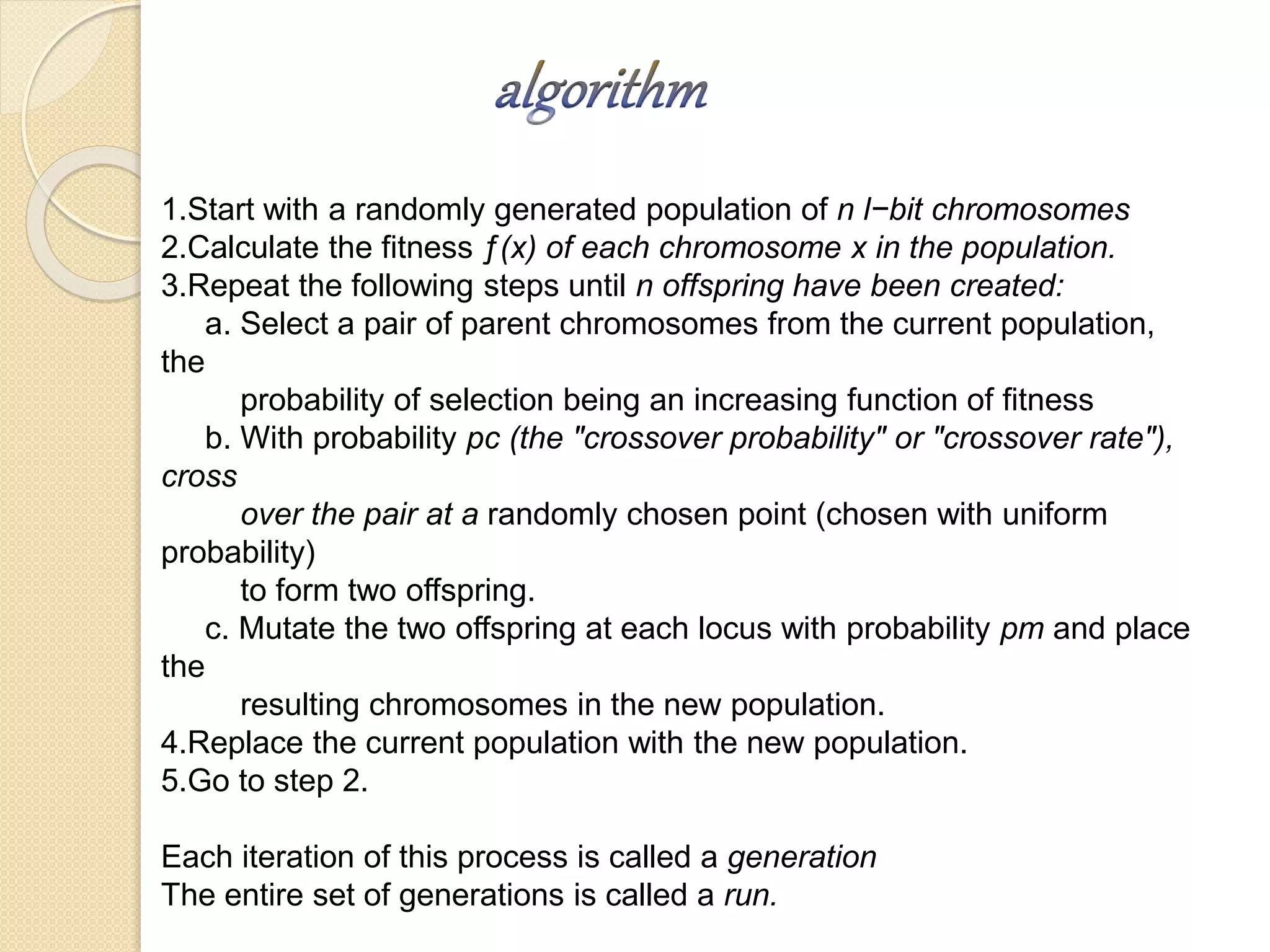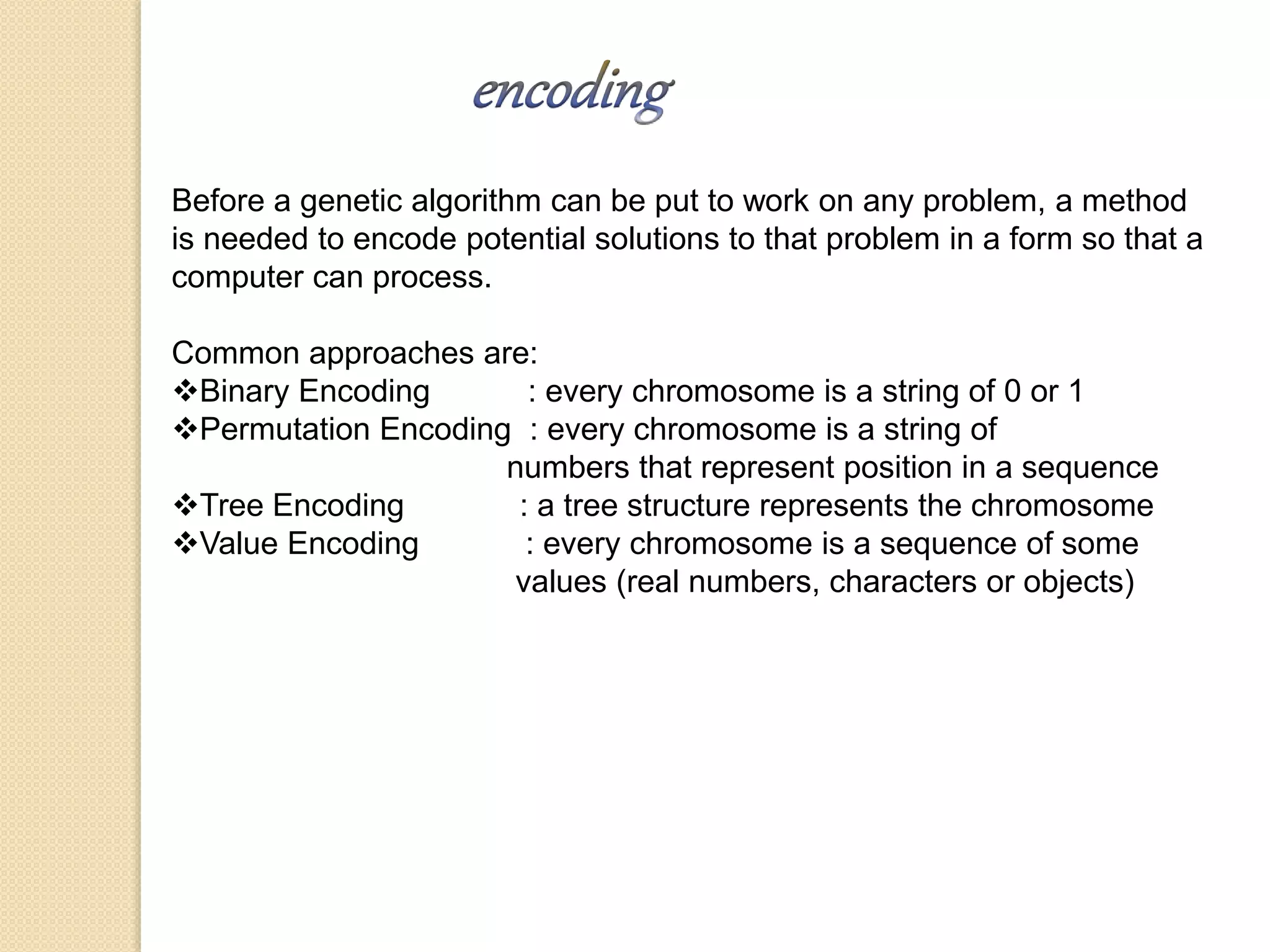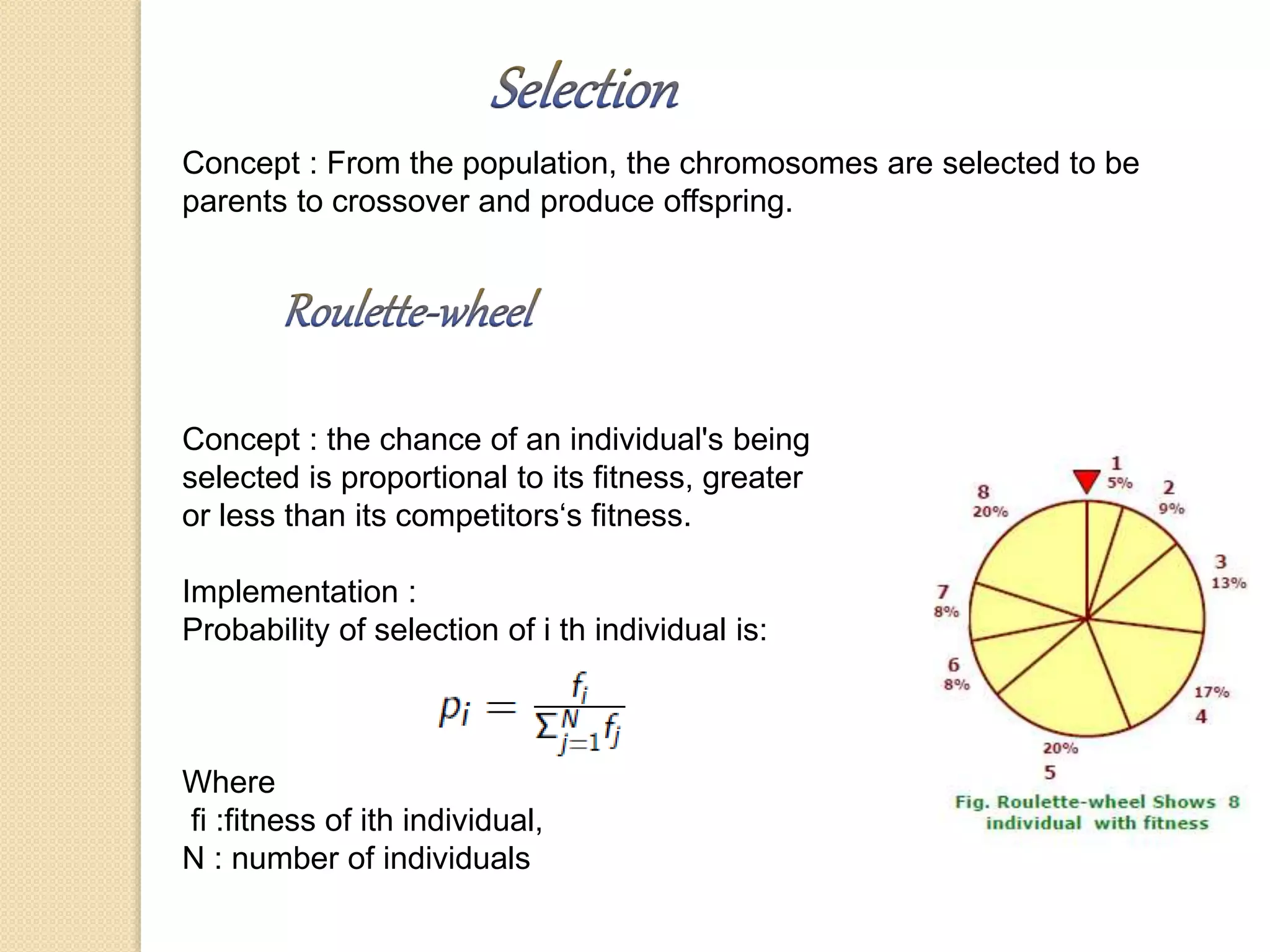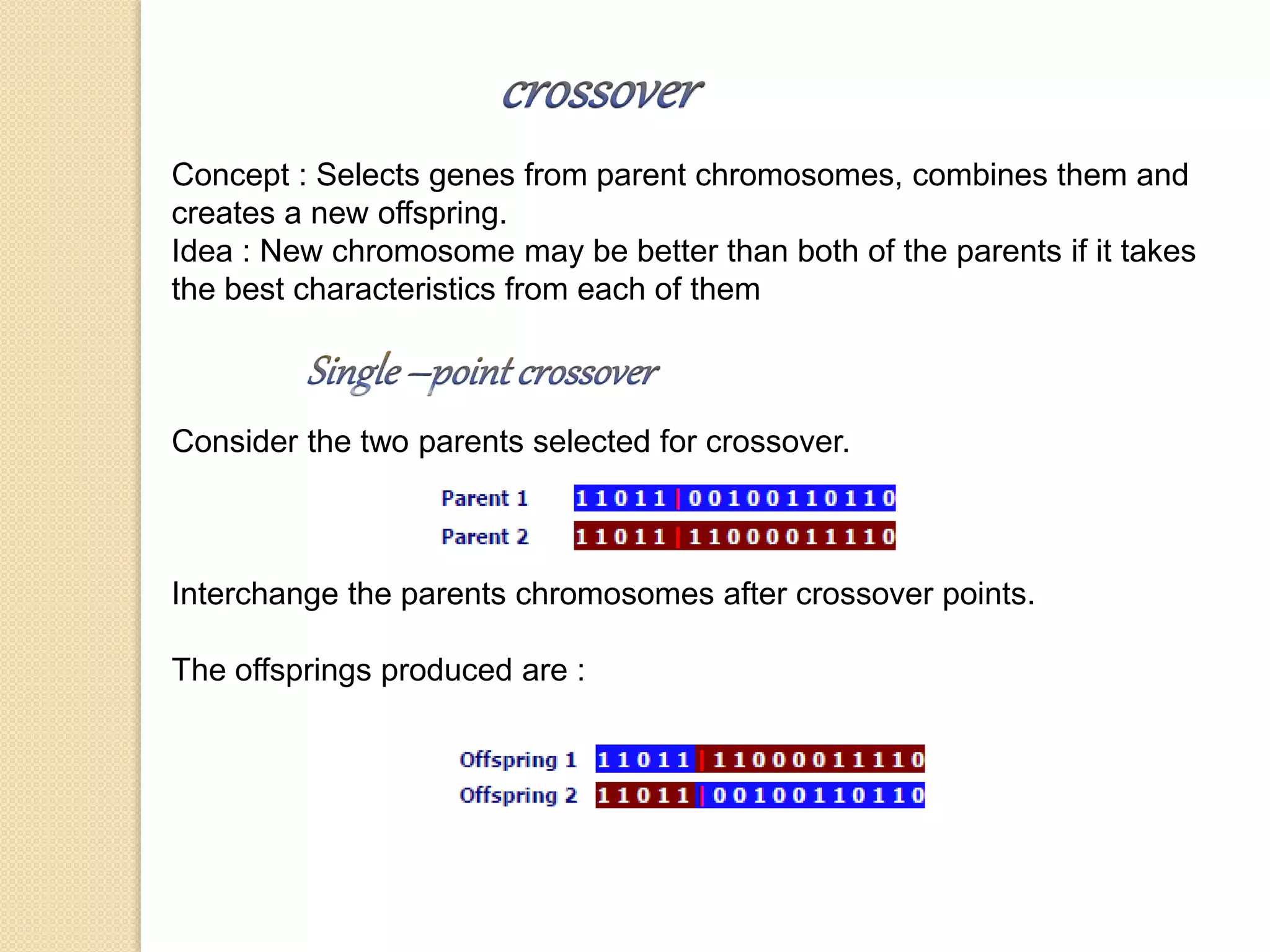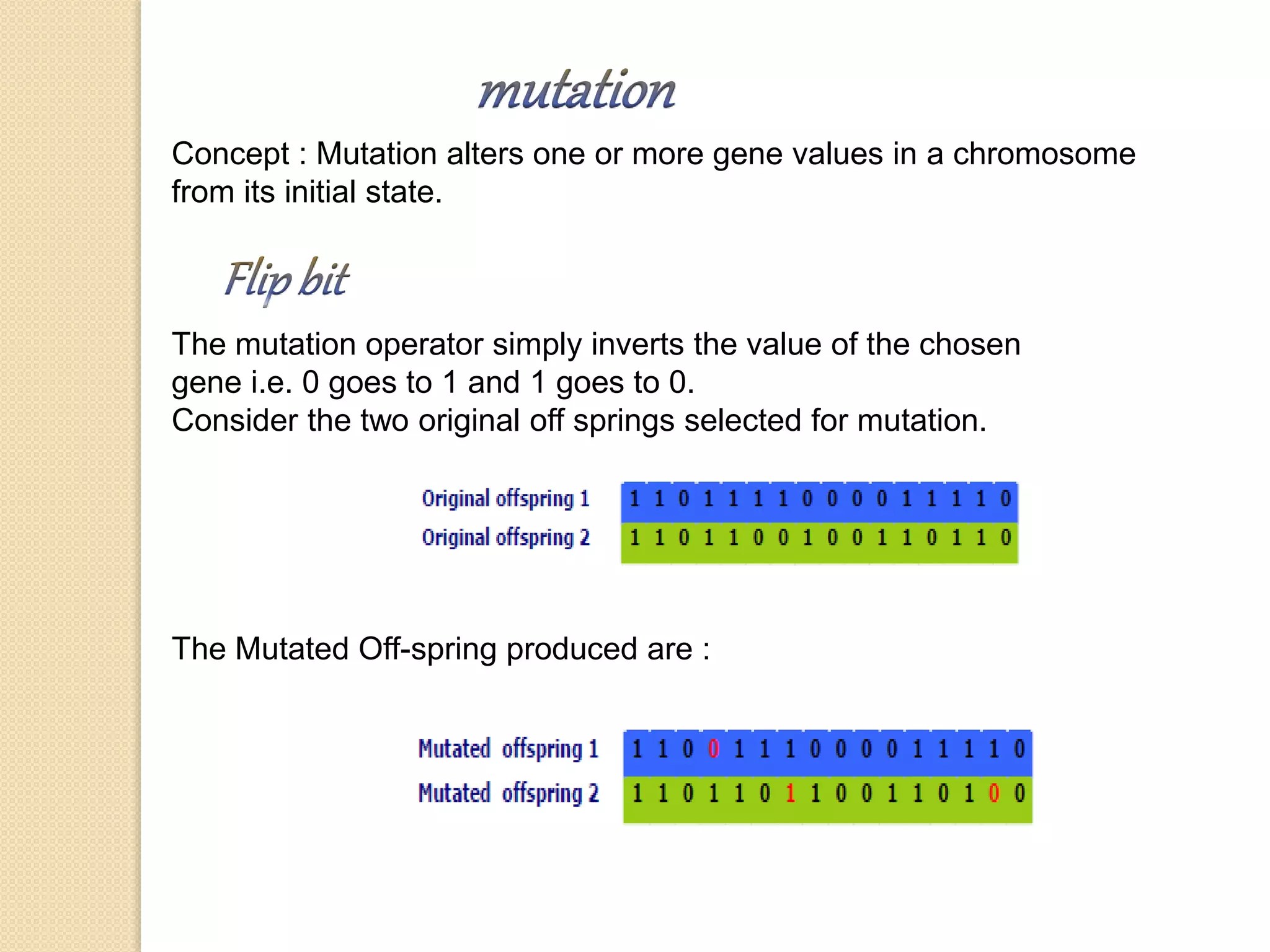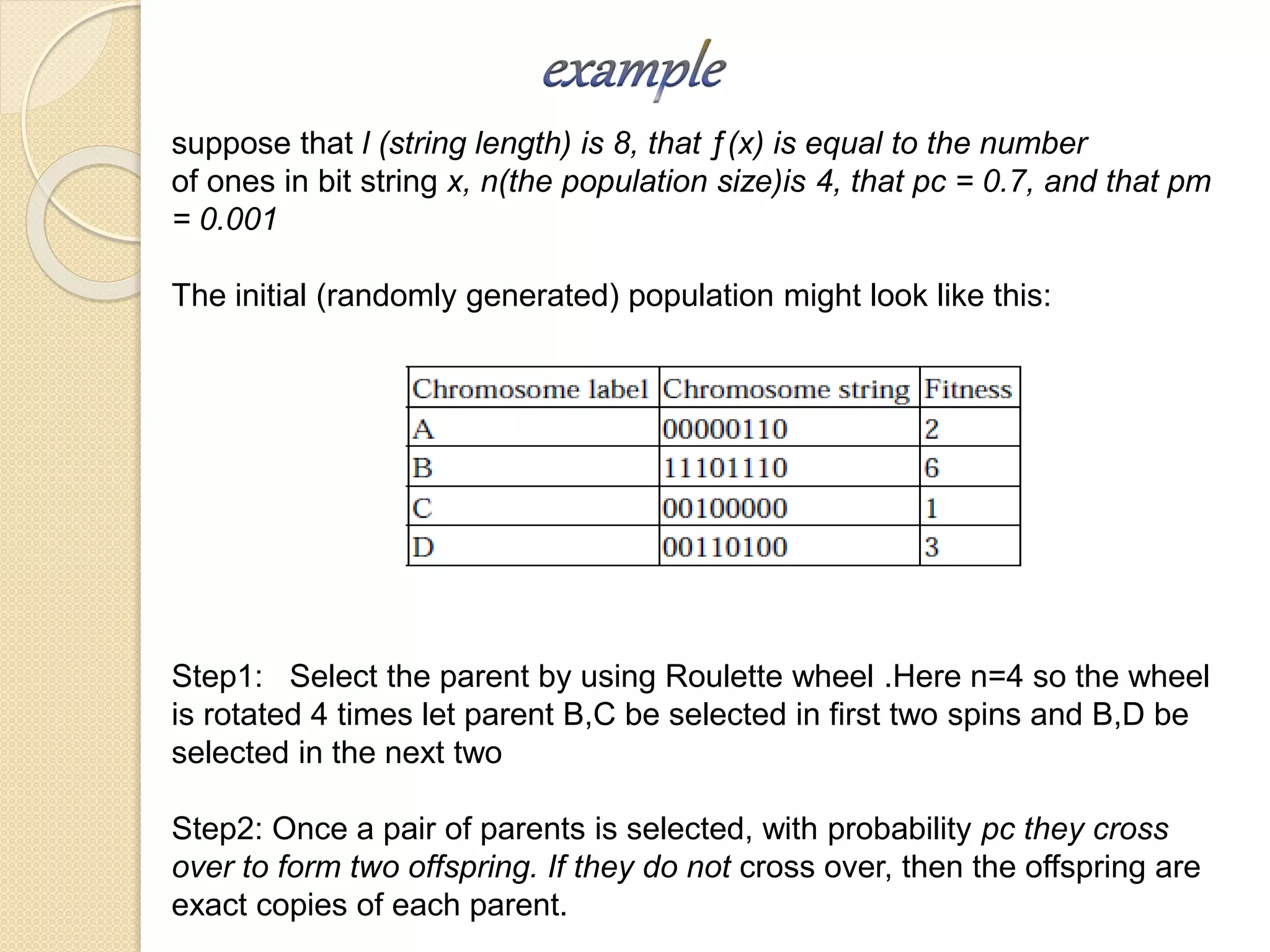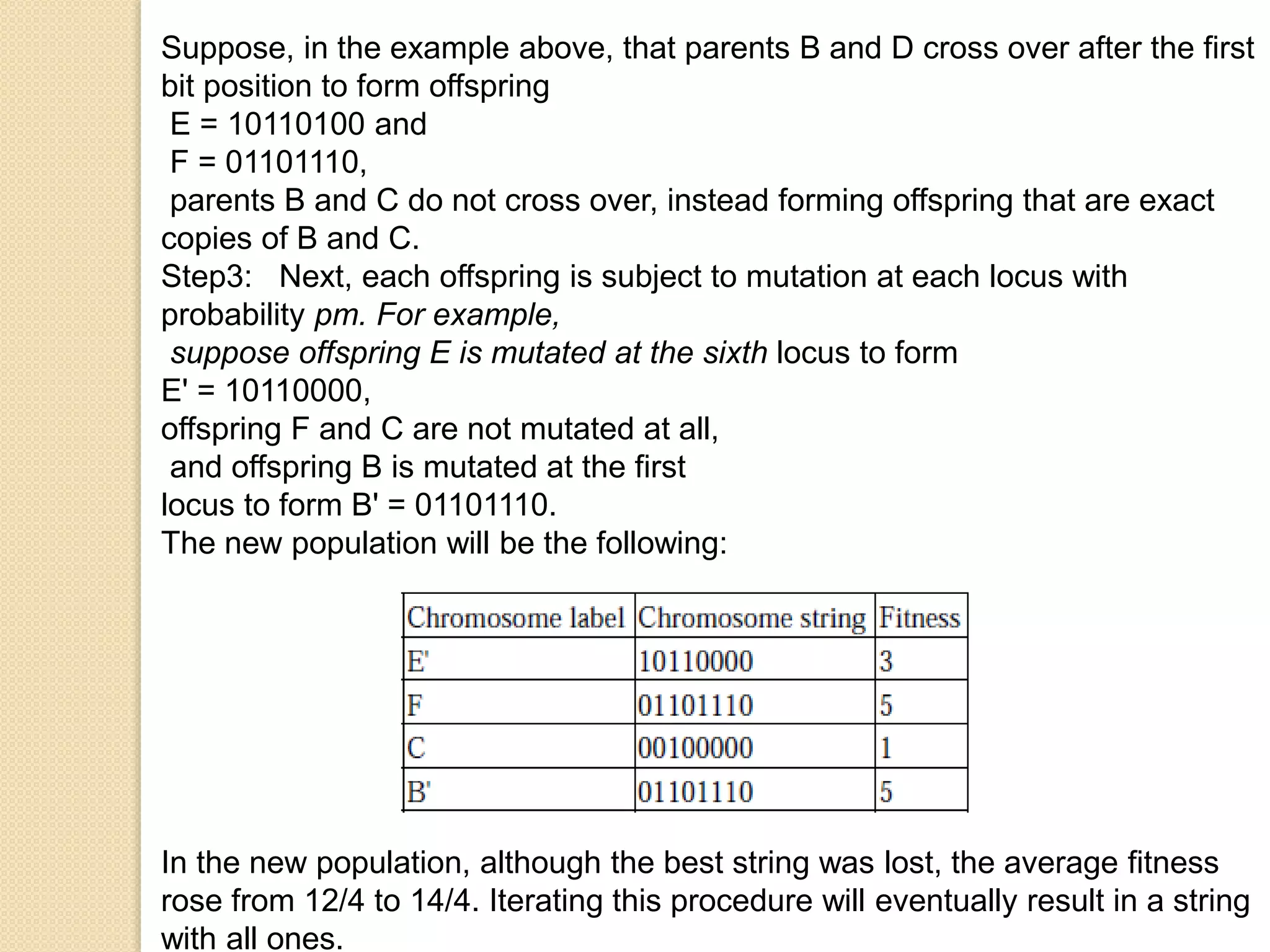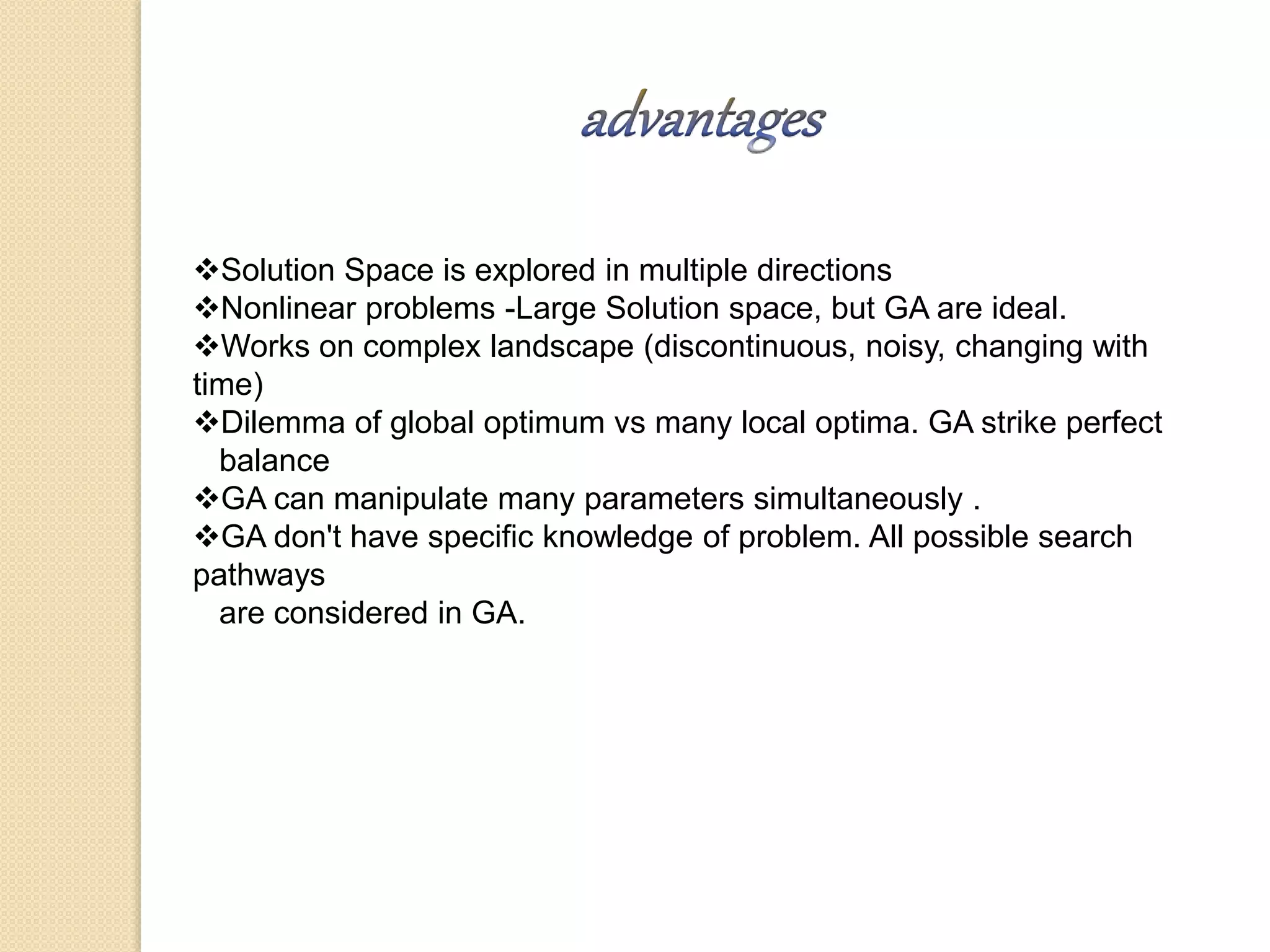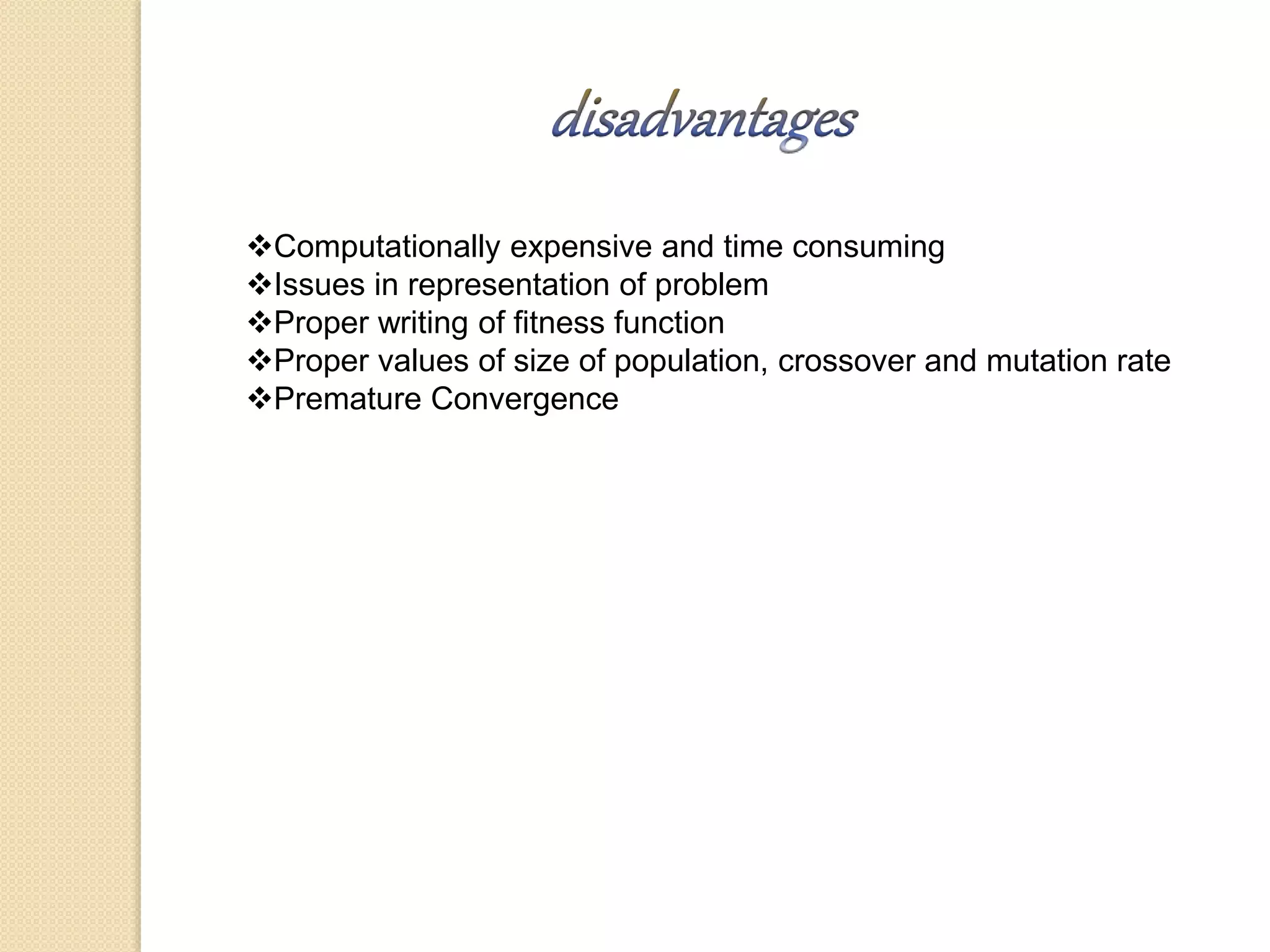1. Genetic algorithms are a class of probabilistic optimization algorithms inspired by biological evolution, using concepts like natural selection and genetic inheritance.
2. They maintain a population of candidate solutions and make the population evolve iteratively by applying operators like selection, crossover and mutation.
3. Genetic algorithms are well-suited for hard optimization problems where little is known about the search space.

